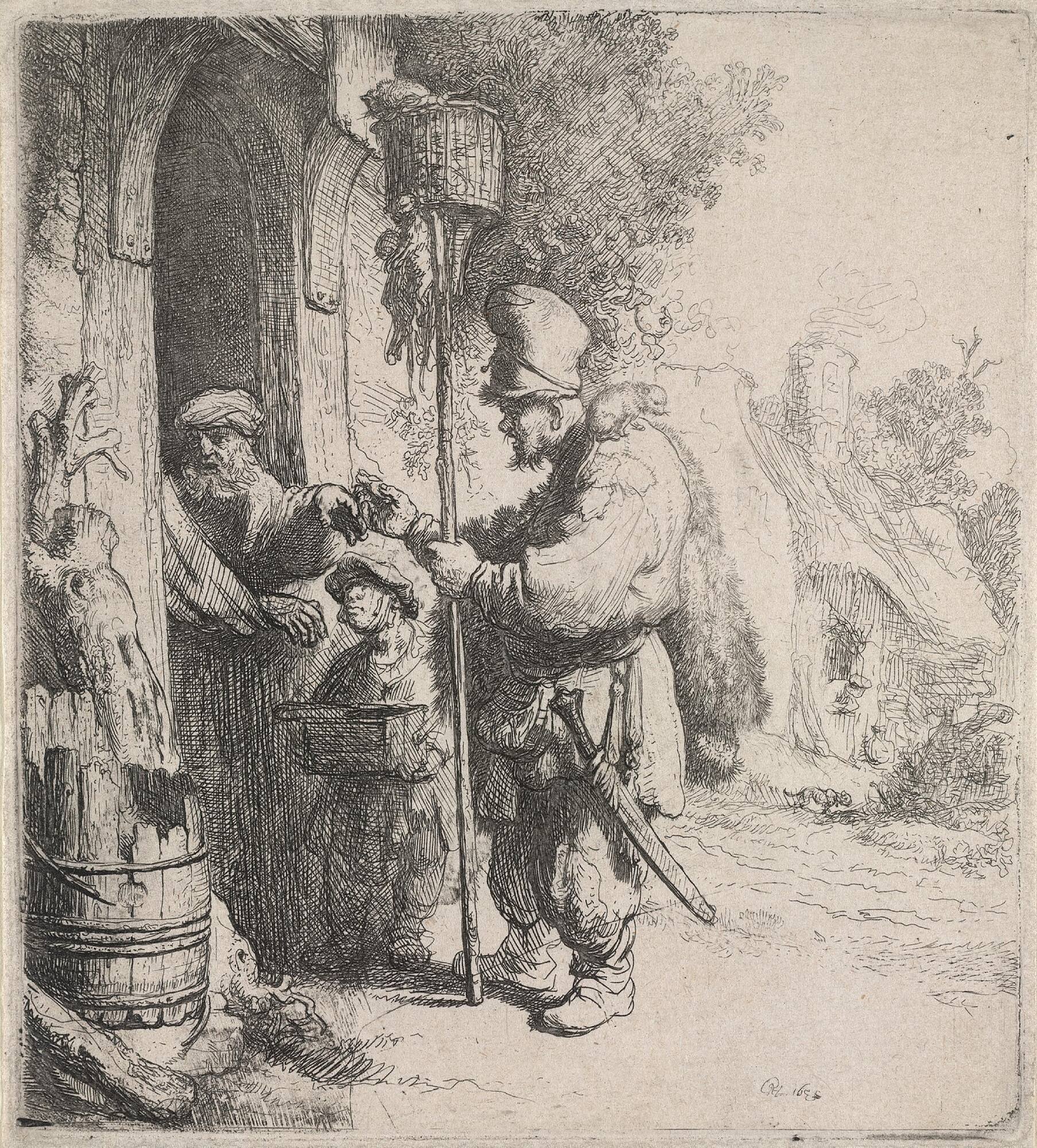
Object Details
Artist
Rembrandt van Rijn
Date
1632
Medium
Etching on laid paper
Dimensions
Image: 5 3/8 x 4 9/16 inches (13.7 x 11.6 cm)
Sheet: 5 1/2 x 5 1/16 inches (14 x 12.9 cm)
Credit Line
Gift of Wellington R. Burt, Class of 1926
Object
Number
65.023
Rembrandt accompanied his studies of stand-alone peasants with more developed genre scenes set in lo(…)
Rembrandt accompanied his studies of stand-alone peasants with more developed genre scenes set in locations that evoke a possible narrative. The Rat Catcher shows an exterminator bent over a windowsill, hawking his trade to a homeowner as his small apprentice watches. The homeowner turns away in either bemusement or disgust at the staff of dead rats being waved at him—presumably as proof of the rat catcher’s efficacy as well as a visual reminder of Amsterdam’s problematic vermin population.
While the “roughness” of the etching’s overall quality may be an indicator that the piece was produced to be sold at a lower price point, the broad strokes and thick patches of open crosshatching add an atmosphere of grittiness, underscoring the subject’s undesirable social position.
This impression’s watermark is datable after 1653, about twenty years after the plate’s initial printing, showing its long-term appeal.
(“Lines of Inquiry: Learning from Rembrandt’s Etchings,” curated by Andrew C. Weislogel and presented at the Johnson Museum September 23–December 17, 2017)
—
Rembrandt’s tongue-in-cheek look at this unsavory occupation features a bedraggled rat catcher receiving payment from a householder for his services. Rembrandt’s fascination with objects from other lands also figures here, in the form of the Javanese sword, or kris, that hangs from the rat catcher’s belt. Rembrandt had a large collection of armor and weapons of various origins, and liked to include them, seemingly at random, in his pictures. However, it is also possible that the rat catcher is a veteran of the East India Company, and the kris a prize from his travels.
(Andrew C. Weislogel, “The New and Unknown World: Art, Exploration, and Trade in the Dutch Golden Age,” catalogue accompanying an exhibition organized by the Herbert F. Johnson Museum of Art, curated by Andrew C. Weislogel and presented at the Johnson Museum August 13 –October 2, 2011)












